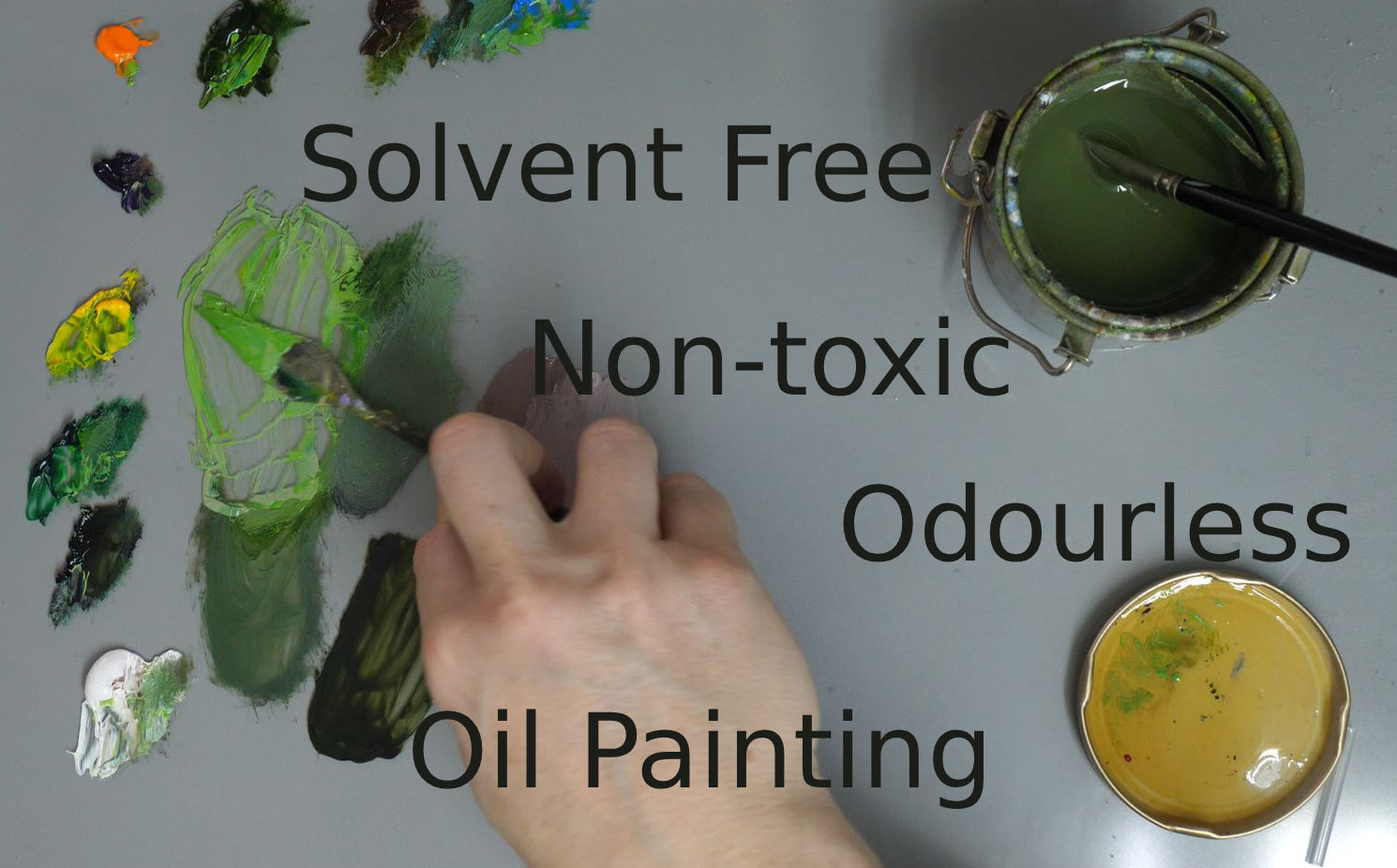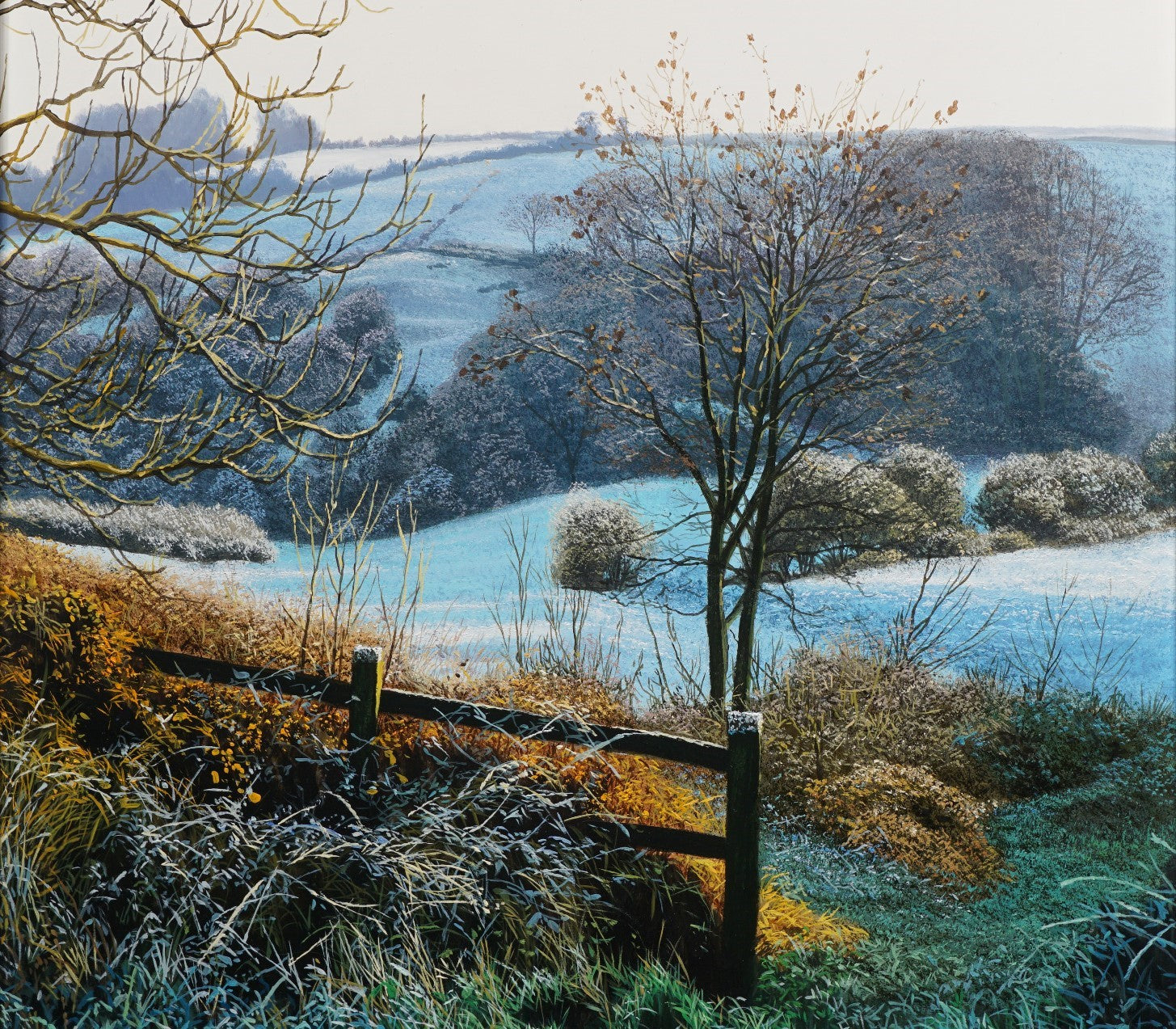
Safety of oil paints and mediums!
How safe are oil paints?
I get many questions asking me about the safety of painting with oils, some say they don’t use oil because they believe the fumes to be too strong, or they believe oil paints to be toxic and prefer to use acrylics which is fine, others think it’s much harder and smellier to clean up after painting with oils. However, I want to dispel some myths around painting with oils.

Myth Number 1: Is Oil Paint Toxic?
The Oil paints themselves are not toxic! Oil paint is made of 2 basic ingredients: pigment and binder. These pigments are the same pigments used in acrylic paint, whereas some pigments may be toxic they are no more toxic in oil paints as in any other medium. There are a few toxic ones, like lead-white, cadmium, and cobalt, but they are only toxic if you eat or breathe in the dry pigment before the oil is mixed. The binder used in Oil paints is primarily made of an oil derived form vegetable matter, most commonly linseed oil and safflower.
It is the solvents used for painting such as turpentine and white spirit that are typically toxic and produce strong odours!
Many companies are now trying to change this and offer non-toxic and low odour alternatives! Which is fantastic news to those of us who love painting with oils but also want to do our bit for the environment and suffer less for our art!
Myth Number 2: Oil Paint Smells!
There is little to no smell omitted by oil paint, it doesn’t have chemical fumes. Typically, the smell associated with Oil paints stems from the painting mediums such as white spirit or turpentine. Even “odourless” mineral spirits can have a distinct smell. However, the line of mediums such as Zest-it and the Gamblin range of mediums have pretty much no smell at all, so that’s a win for us artists! And of course, you can use the paint straight from the tube!
Myth Number 3: It takes so long to clean up after painting with Oils, and it’s smelly!
This is one of the most common misunderstandings. It’s no more complicated to clean up after using oils as it is with acrylics, and again there are many low odour non-toxic products to use which keep those toxic fumes away from your workspace! Cleaning your brushes does not have to be a gruelling task filled with dread at the end of the day either! You don’t need to clean your brushes as often as you do when painting with acrylic, which requires regularly swishing in water. I usually clean my brushes after a day’s painting, by swishing in low-odour solvent, you can even use soap and water! This process is straightforward and should not fill you with dread. With the help of various products that are not smelly, toxic, or harmful to you and the environment, you can get back to what makes you happy, painting, of course!
Safe Natural thinners & Mediums for oil paints.
Solvent safety has been the subject of many questions from my students and other artists who worry about the safety of certain solvents & mediums for themselves and the environment. I aim to shed some light on this and explain more about the solvents that you can use.
Solvents are used to dilute oil paints for washes or thin paint for blocking-in layers, additionally, I use solvents to clean my brushes.
You may wonder if it's still possible to paint with oils, without using these smelly mediums! The good news is that you can still paint with oil paints, without having to use toxic solvents, by opting for solvent-free & low odour products.
There are different types of solvents to choose from, some of these you will already be aware of which have rather unpleasant odours, such as white spirit and turpentine. However, there are great alternatives, such as low odour & non-toxic solvents. Citrus based thinners, Oil of Spike Lavender and Safflower Oil can be used for both cleaning brushes and thinning oil paint. There are several other plant-based solvents & mediums that are gentler on your health and on the environment. In my experience Linseed oil, a non-toxic medium is very effective in helping the paint to dry quicker, although it’s supposed to slow the paint drying time. Being odourless and kinder to you and the environment is a major plus.
I hope this helps you when deciding which solvent and medium you choose to use and answers some questions you may have around health and environmental concerns.
In short there are many odourless and non-toxic versions on the market now which can make your decision easier and lead to a healthier, happier painting experience without compromising on effectiveness!

Happy Painting


